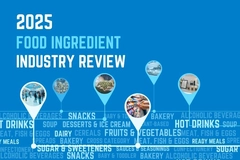
- Industry news
Industry news
- Category news
Category news
- Reports
- Key trends
- Multimedia
- Journal
- Events
- Suppliers
- Home
- Industry news
Industry news
- Category news
Category news
- Reports
- Key trends
- Multimedia
- Events
- Suppliers
Scientists develop safeguards to improve biodiversity tracking in the food industry

A study led by University of Oxford researchers outlines a new blueprint to help tackle the biodiversity impacts of farming. They developed a framework to help agricultural sectors better contribute to global biodiversity targets without causing unintended harm.
Based on data from the Dutch dairy sector in 2020 and covering almost 8,950 farms, the study has established a single combined score to track biodiversity impacts against possible sectoral targets.
Researchers found that while using such a score can be helpful to track overall progress, such methods can mask important local impacts, including nutrient pollution and habitat loss. These are currently poorly captured with existing biodiversity impact indicators.
The team developed a set of safeguards — clear, quantitative thresholds for major environmental pressures — that act as checks and balances, ensuring that improvements in one area do not mask problems in another.

Although they are extremely useful, relying on simplified, combined indicators to track agricultural impacts on biodiversity can be misleading if used alone. By introducing scientifically grounded safeguards, improvements can be made in one area that do not cause damage somewhere else.
We speak with Joseph Bull, associate professor in Climate Change Biology at the University of Oxford, one of the lead researchers.
Why was it necessary to come up with a new blueprint to help tackle the biodiversity impacts of farming?
Bull: The Dutch sustainable dairy sector organization DZK wanted to find a way to track its biodiversity impacts, but was conscious that it would be challenging to do so using a single metric in isolation, so they asked us to explore other approaches. We settled on this one — using one composite metric based on combining multiple environmental impacts, and accompanying it with environmental safeguards as well as an overall biodiversity target.
What is the single most important takeaway or recommendation for policymakers from this study?
Bull: That a useful approach for organizational and/or sectoral biodiversity strategies is to set targets around multiple environmental impacts (e.g., GHG emissions, land use change, water use., etc.) but then track overall progress (for reporting/disclosure year on year, etc.) using an aggregated biodiversity metric. In this case, we base that composite metric on lifecycle impact assessment approaches, which are gaining considerable traction for these kinds of analyses.
It was also very interesting that meeting the safeguards we designed would allow the sector to progress most of the way toward ‘no net loss’ of biodiversity, meaning that the requirements for compensation measures (e.g. offsets) to get to ‘nature positive’ would be small
How can the agri-food industry use the insights from this study to help stakeholders and supply chains?
Bull: We would like to see this replicated for other commodity chains, as part of efforts to design the nature positive economy.
How did the team go about developing a set of safeguards?
Bull: Essentially we combined a policy analysis based on our set of environmental impact indicators (e.g. applicable national or European legislation on nutrient loads, water use, GHG emissions; good practice on sourcing of commodities in supply chains e.g. palm oil and soy) with stakeholder analysis of farmers and researchers in the Netherlands concerning preferences (e.g. for placement of biodiversity offsets).
What were some of the biggest surprises or counterintuitive findings from analyzing the Dutch dairy sector?
Bull: That nutrient loads contributed relatively little to overall impact. The impact is high in the Netherlands, but due to the relatively high biodiversity in other parts of the world, land use change came out much higher. We were also surprised that meeting our set of proposed safeguards would potentially take the sector such a long way toward prevention of biodiversity impacts.
The study mentions overseas biodiversity loss due to imported feed. What specific changes could reduce these overseas impacts?
Bull: This is the really challenging part as obviously more proteins could be produced nationally, which would reduce the overall impacts of the sector, but then there would be more land taken required for this in the Netherlands, and consequently less land available for other uses (e.g. nature conservation). Or, this could be traded off against dairy production, but again that is challenging for farmers.
Alternatively, we could look to better understand the geographical location of supply chains, and work on optimizing those supply chains locations for lower impacts, which would require a lot more data and transparency in those supply chains. Either way, as discussed in the paper, there are trade offs to be considered.
How scalable is this framework to other agricultural sectors like beef, soy, or palm oil?
Bull: Entirely scalable. In principle (with the relevant farm data, and a similar analysis to develop commodity specific safeguards) this could be replicated for any other agri-food supply chain. One of the study co-authors, Joseph Poore, is doing a lot of fascinating work on this through the HESTIA initiative he leads.
What comes next?
Bull: We are carrying out extensive work on other European projects that include how multiple sectors like this could combine to deliver a nature-positive economy, and using earth observation data to support sustainable agri-food supply chains.










